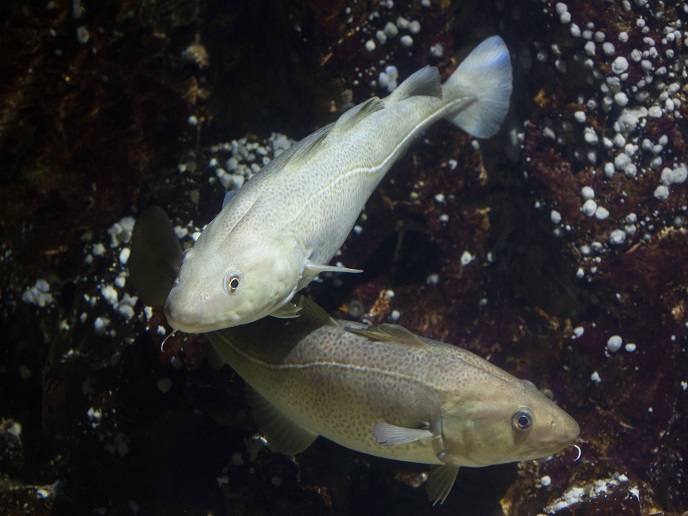Fish keep track of their speed and orientation in the water while swimming using calcified structures called otoliths in their inner ear. Carbon, in the form of CO2 and calcium from the blood, makes up the calcium carbonate in these ear stones. Carbon in these otoliths is found in several forms – multiple isotopes – including the slightly heavy 13C and the lighter 12C.
Funded by a Marie Skłodowska-Curie fellowship, the OTOLOG research team from Aarhus University in Denmark has demonstrated that the composition of the two isotopes in fish otoliths correlates to the fish metabolic rate.
Otoliths – a fish fitness tracker
The researchers realised that fish otoliths comprise two sources of carbon in their calcium carbonate: carbon taken up from the water in which the fish swims and from food that it consumes. These sources have different ratios of heavy and light carbon isotopes.
“We coupled the variations in the carbon with the fish’s metabolism. When the fish’s metabolism increases when it swims in warm water or is more active, it burns off more food and the proportion of carbon from the food in the otoliths increases,” explains Prof. Peter Grønkjær, Department of Bioscience, Aarhus University. “In the same way as a fitness tracker, they monitor and store information on the fish’s activity level.”
A treasure trove of data
Otoliths retain their carbon isotope composition even after the fish is dead. By analysing the carbon isotopic value in each growth ring, researchers can tell how seasonal variations in temperature, food and the fish’s behaviour affected its metabolism. “Our new discovery will be the key to a treasure trove of new information,” says Dr Ming-Tsung Chung, a research fellow on the team and the man behind the data published in the journal Communications Biology, from Nature Research.
Earlier, research relied on artificial experimental set-ups in the laboratory and theoretical models of fish metabolism, making simulation of natural conditions impossible. “Now we can measure and understand how fish are affected and adapt to changes in the environment and the rate of the food intake needed to have enough energy for swimming, growing and reproducing,” Prof. Grønkjær reports. “We are now able to develop much better models to illustrate what happens to the fish when the environment changes,” he adds.
Fishing for information back in the 1800s
Researchers had started looking at otolith rings as indicators of growth as far back as the 1890s. Stored in small brown paper bags in the archives of research institutions, these same otoliths can now provide significant new insight into the life of fish.
Very old otoliths may also be found in kitchen middens, or ancient rubbish tips. Even though these otoliths are several thousand years old, they still contain a carbon signal that reveals the fish’s metabolism.
Prof. Grønkjær’s research group has already initiated the analysis of otoliths of Greenlandic cod, available in an unbroken series since 1926. Hopefully, they will be able to provide yet another important piece in deciphering the puzzling marine environment within a few years. An unexpected bonus, “we will have much better knowledge of what will happen with the different fish stocks when the sea becomes warmer,” concludes Prof. Grønkjær. This could help predict climate resilience in fish.
Keywords
OTOLOG, fish, otolith, carbon, metabolism, isotope, energy, cod, climate change
Project Information
OTOLOG
Grant agreement ID:
707481
Project closed
EC signature date
8 July 2016
Start date
1 November 2016
End date
31 October 2018
Funded under
- EXCELLENT SCIENCE – Marie Skłodowska-Curie Actions
Total cost
€
200 194,80
EU contribution
€ 200 194,80
Coordinated by
AARHUS UNIVERSITET
Denmark
This project is featured in…

